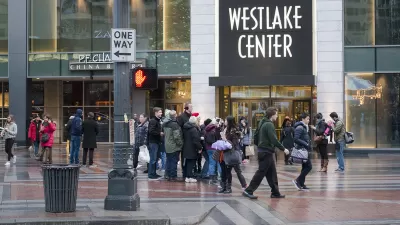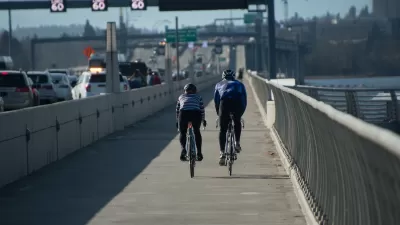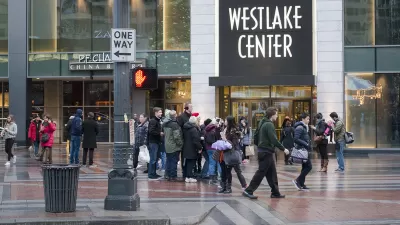A status update of the Seattle Pedestrian Master Plan leaves a writer wondering if the backlog of pedestrian infrastructure maintenance will grow while only a few planned projects get built.

Ryan Packer writes a review of the current status of the Pedestrian Master Plan (PMP) adopted by the city of Seattle in 2009, "to determine how to approach the issue of maintaining, improving, and expanding the pedestrian network…" According to Packer, the key takeaway offered by the plan is a statement of prioritization: which pedestrian improvements get done first.
Along those lines, the plan distinguishes a Priority Investment Network (PIN), which includes "adjacency to the priority transit network, close walksheds to schools, streets where sidewalks are currently missing, and streets where there are high rates of collisions involving pedestrians."
It's the question of funding that makes Packer question the real ability of the plan to prioritize anything at all. Many of the projects in the PMP relies on the Move Seattle levy. As Packer shows, referencing the PMP directly, "the levy would fund 250 blocks of new sidewalks, and the identified need that only include arterials within the priority network is more than double that."
These facts lead Packer to the conclusion that "[i]t’s conceivable that in five or six years, when the time comes to redevelop the Pedestrian Master Plan, that the need will grow even further to the degree that the priority investment network needs a further subcategory in order to prioritize investments in it." Moreover, Packer wonders about the sincerity of city officials claiming to target a Vision Zero agenda of eliminating traffic fatalities by 2030 "when our most robust transportation levy in decades only provides for spot improvements on 12 to 15 corridors…"
FULL STORY: Pedestrian Master Plan Update

Alabama: Trump Terminates Settlements for Black Communities Harmed By Raw Sewage
Trump deemed the landmark civil rights agreement “illegal DEI and environmental justice policy.”

Study: Maui’s Plan to Convert Vacation Rentals to Long-Term Housing Could Cause Nearly $1 Billion Economic Loss
The plan would reduce visitor accommodation by 25% resulting in 1,900 jobs lost.

Planetizen Federal Action Tracker
A weekly monitor of how Trump’s orders and actions are impacting planners and planning in America.

Wind Energy on the Rise Despite Federal Policy Reversal
The Trump administration is revoking federal support for renewable energy, but demand for new projects continues unabated.

Passengers Flock to Caltrain After Electrification
The new electric trains are running faster and more reliably, leading to strong ridership growth on the Bay Area rail system.

Texas Churches Rally Behind ‘Yes in God’s Back Yard’ Legislation
Religious leaders want the state to reduce zoning regulations to streamline leasing church-owned land to housing developers.
Urban Design for Planners 1: Software Tools
This six-course series explores essential urban design concepts using open source software and equips planners with the tools they need to participate fully in the urban design process.
Planning for Universal Design
Learn the tools for implementing Universal Design in planning regulations.
Caltrans
Smith Gee Studio
Institute for Housing and Urban Development Studies (IHS)
City of Grandview
Harvard GSD Executive Education
Toledo-Lucas County Plan Commissions
Salt Lake City
NYU Wagner Graduate School of Public Service





























